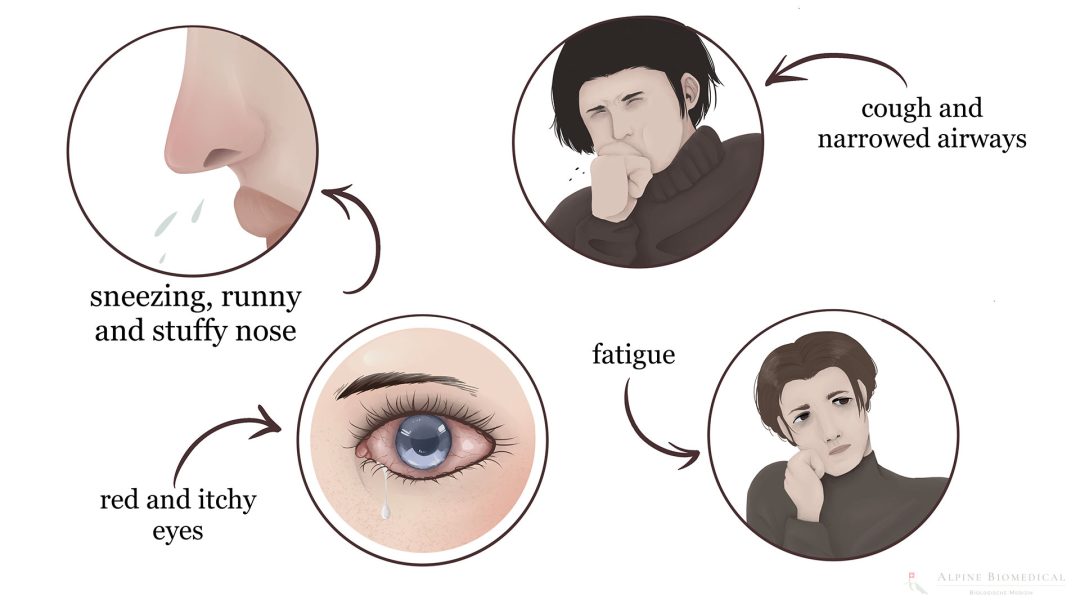House Dust Allergy

The term “house dust allergy” is somewhat misleading because those affected do not react to the house dust itself. House dust allergy, on the other hand, refers to an immune reaction to the excretions of house dust mites. As a result, an immediate-type allergic reaction occurs, in which the immune system reacts within seconds or minutes.
Symptoms of House Dust Allergy
Contact of the allergens with mucous membranes in the eyes, nose, mouth and throat leads to various symptoms such as:
- blocked nose
- reddened and itchy eyes
- itchy ears
- sneezing irritation
- breathing difficulties (shortness of breath, asthma, coughing)
- skin rash
The symptoms can vary from person to person, affecting the lungs, nose or eyes and skin.
Diagnosis and Treatment of a House Dust Allergy
The easiest way to diagnose a house dust allergy is by means of a blood test. A skin test (prick test) is also possible, but can occasionally lead to unwanted allergization, which is why it is advisable to discuss all diagnostic options in advance.
The treatment of a house dust allergy is based on the reduction of dust-forming sources of danger such as soft toys, carpets, etc. It is also advisable to replace normal bedding with hypoallergenic bedding. Drug therapy is not usually necessary.
From a holistic medical point of view, measures that regulate the immune system, such as intestinal cleansing and detoxification of heavy metals, are recommended.
Dr. med. Karsten Ostermann M.A.
In order to achieve a lasting improvement, treatment for house dust allergy should always address the cause of the problem. We will be happy to help you.

Further information
The information listed contains relevant topics and serves to improve understanding.